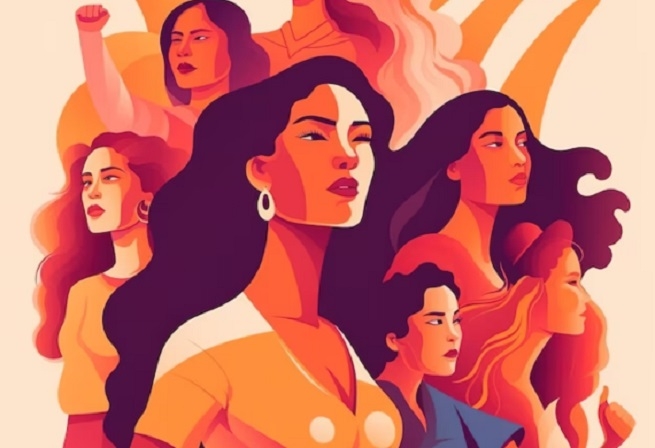Women Empowerment In Indian Culture
| Date :21-Jan-2024 |

By DR BHUSHAN KUMAR UPADHYAYA :
Women empowerment
is one of the dominant concerns of
modern society. Numerous legislations, mandates, reforms,
movements, etc, have seen the
light of the day in this direction. Still in many countries of
the world women are struggling for their basic rights to
live freely and honourably.
The core ingredients of
women empowerment include
education, social equality, freedom to choose life partners,
employment, freedom of
speech, etc.
The culture of a country
exerts a great impact on the
issue of women empowerment.
The culture is basically composed of religious traditions
and beliefs, social customs,
economy, philosophy, etc. A
look at Indian culture has a lot
of positive stories to tell in this
regard. The Rigveda, the oldest
available text, has ample
examples of women empowerment. There are 27 women
seers mentioned in the Vedic
literature. Apala, Lopamudra,
Ghosha, Romasa, etc, are
amongst the most famous
Vedic seers who have contributed to the Vedic hymns.
These scholarly women seers
are called Brahmavadinis.
They used to attend Sabha and
Vidatha of the Vedic period.
These Sabha and Vidatha were
assemblies and core committees which used to take important decisions.It is mentioned
that some of the women were
trained in military warfare
also. Mudgalini, Vispala,
Sahiyasi, etc, are important
among them. Kali and Durga
were fierce fighters. Women
used to take part freely in all
festivities.There was sacred
thread ceremony for girls also.
Even today this tradition continues in India in some of the
communities.
We find historical references to women bodyguards in Maurya periods.
Swayamvara was a marriage
tradition where girls used to
choose their life partner. There
was a tradition of widow
remarriage also. There are
multiple examples where
women were married after the
death of their husbands. Sati
tradition is not found anywhere in the Vedic, post Vedic,
the Ramayana and
Mahabharata periods. None of
the queens of Raja Dashratha
became Sati after his death. In
the Mahabharata also there is
no single example of Sati.
The scholarly tradition of
women in Indian culture is
very rich and robust. The erudite discussions of Gargi and
Maitreyi are well known.
During the debate between Adi
Shankaracharya and
Mandana Mishra, Ubhaya
Bharati, the wife of Mandana
Mishra presided over the
debate.There are many poetesses of Sanskrit literature.
Shilabhatarika, Indulekha,
Lakshmi, Bhavadevi,
Madalasa, Vikatanitamba, etc,
are famous amongst them.
In the divine pantheon
women gods occupy prominent positions. Saraswati is the
goddess of wisdom, Lakshmi of
wealth and Durga of power.
The incarnation of women
power is given utmost importance in the Vedic tradition.
In Buddhist and Jain traditions also we find Bhikkhunis
and Sadhwis.Gotami,
Yashodhara, Uppalavana
,Vishakha, etc , are the earliest
Buddhist female monks and
scholars. Chandana is considered as the first Jain female
monk. There is a rich tradition
of Jain female monks. Thus
whenever we turn towards the
basics and core spirit of Indian
culture, very rich traditions of
women empowerment are evident there.

■(The writer is Former DG
Police & CG, Homeguards,
Maharashtra)